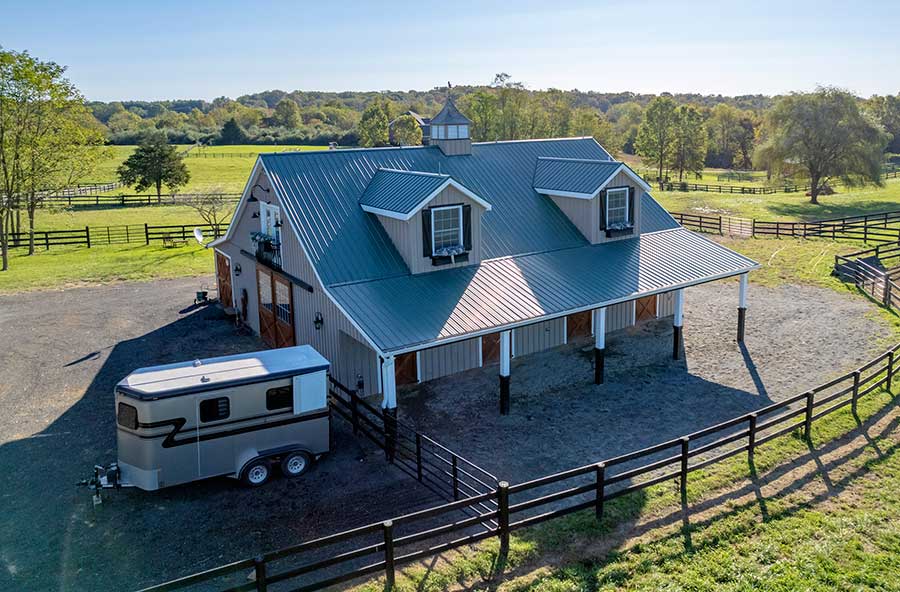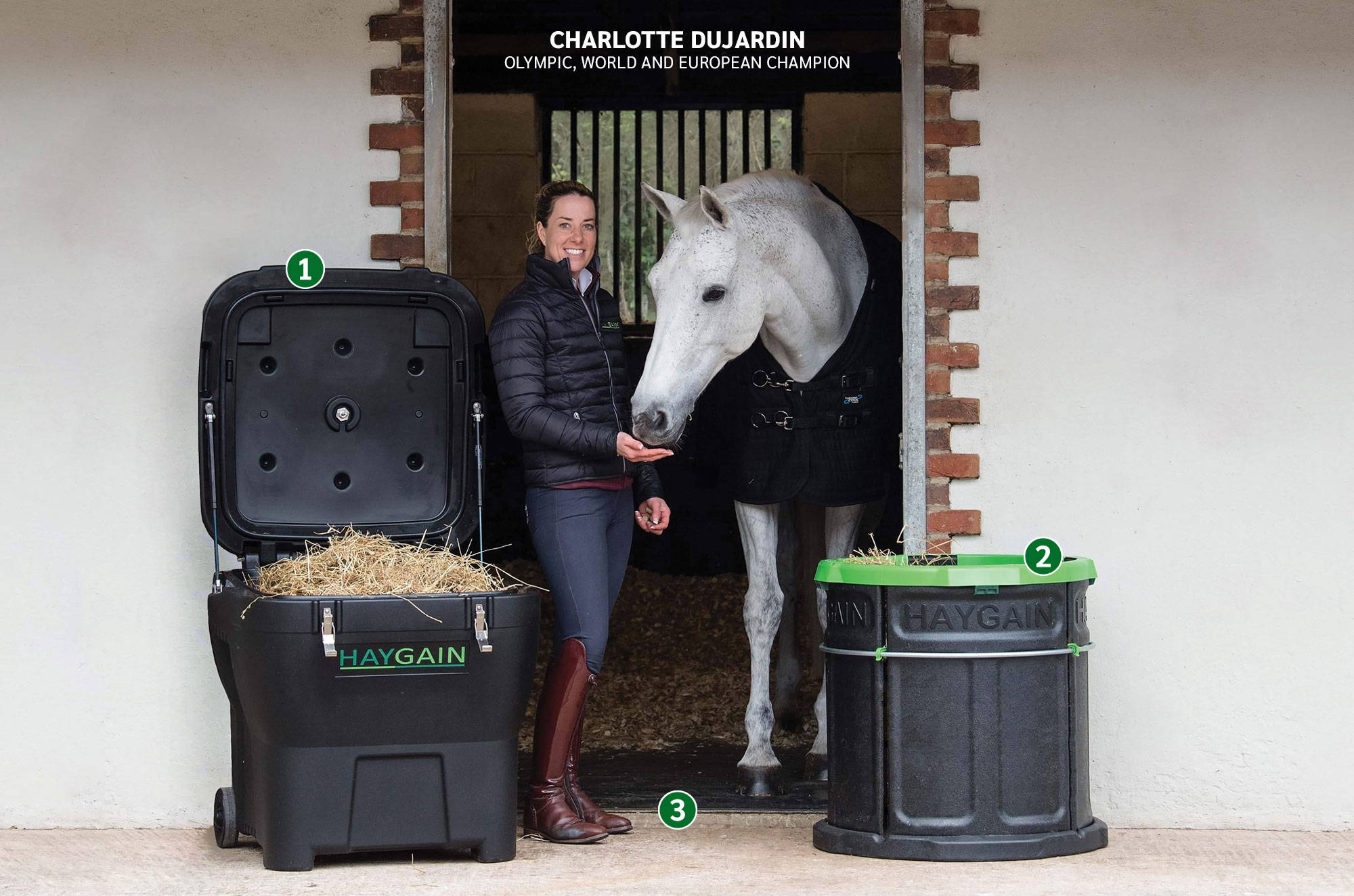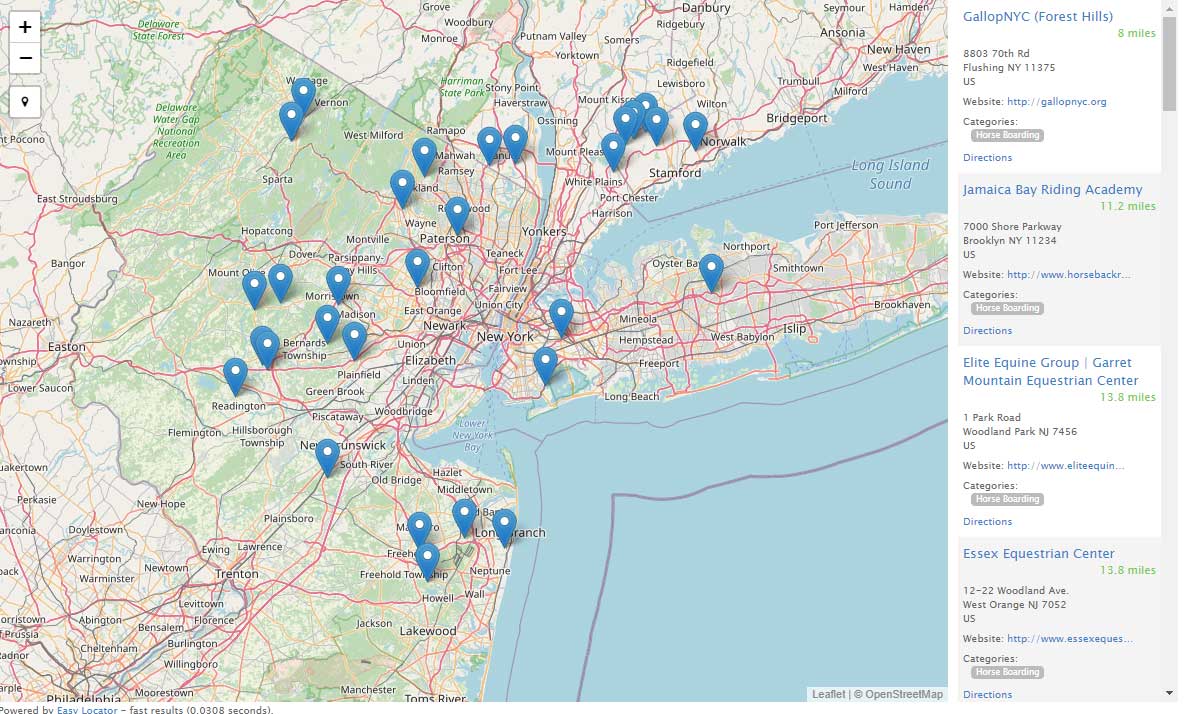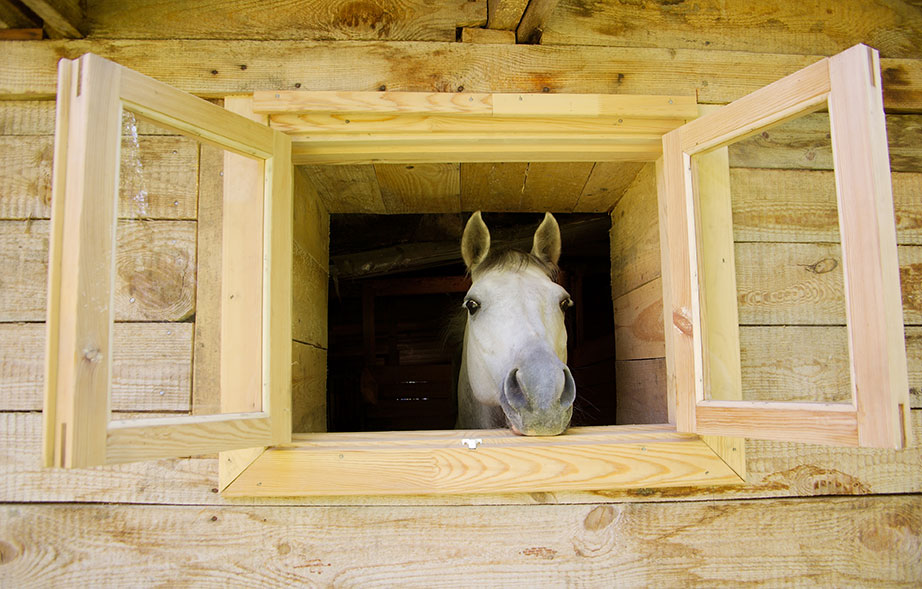Tack & Farm
Our Tack & Farm section features an Apparel section to find both practical and fashionable riding attire. If you ride English & Western or Race, many sources are available in the Tack section.
Building a barn? Need an architect for your equine dream home? Find one in Barns & Stalls.
Have a hungry horse? Of course you do! Find a place to buy your feed and tuck your horse in at night in the Bedding & Feed section. Looking for a place to keep your horse? You can find it in the Horse Boarding section. Keep your horse happy and beautiful with resources in our Grooming section.
Traveling? Find a Shipping company or Horse Sitting service if your horse is staying home!
Running and maintaining a farm or stable is a continuous effort, and to help find products or tools you need, please see our Equipment, Fencing and Management Tools sections.
Seeking Services? Find financial and tax expertise in our Accounting section. Companies who will help protect your investment are found in the Insurance section. For those who want legal advice about purchasing, liability, and other issues, please look at the Equine Law section to find an expert. Build and promote your business with teams from Marketing / Videography / Web Design.
Do we need to add more? Please use the useful feedback link and let us know!

by Nikki Alvin-Smith
In some instances little attention is paid to whether the horse barn or indoor arena roof has the perfect pitch in design and construction until it’s too late. When calamity strikes and photos of a collapsed barn roof due to heavy snow loads from a storm or pictures of metal roofs peeled back by the wind like a can of sardines hit the newswire, then horse property owners may cast a worried look up at their own horse housing structures and regard the sturdiness of the apparent design.
If worrying about the perfect pitch for your new horse barn is ‘over your head’ then you are not alone. Engineers and architects spend years drafting their skills to include a mind-blowing number of mathematical formulas learning about structural design. Included in their education is how to calculate physical loads on headers and beams and other support systems within a structure.
Every building is different and should be treated on an individual basis. Depending on the geographical area where it is to be built and the present and possible future use of the structure, every horse barn needs to wear its own ’hat’. The initial load calculations work on the basis that the roof is flat and is then amended to take account of the slope or pitch of the roof and its design and material components.
The Loaded Question
Three types of load factor into the equations. Live load, dead or total load, and uplift load. As budget concerns also factor into every building design equation, it is easy to be tempted to cut corners by cutting costs and working close to tolerance margins.
Factoring loads will require consideration and review of all structural members of the barn. These items may include beams, rafters and headers, and walls. How these members are tied or joined together is also assessed, as obviously the strength and integrity of how these components fit together is often the weakest link.
Total load refers to the passive load that the roof will carry such as the weight of the roof itself, pipe supports and any equipment likely to be added to the roof. This may include insulation attached to its underside or lights or other equipment suspended from its rafters or trusses.
Live load refers to temporary concerns the roof may endure. The most important of these considerations is snow load. If you’ve ever picked up a snow shovel and cleared pathways free of snow through a winter season, then you know that snow comes in different weights and different amounts of drift occur as a result of the amount of water in the snow. So expected wind speeds must also be taken into account when calculating live loads.
As if that isn’t enough temperature also factors into the mathematical formula as by laws of chemistry and physics the rate of ice melt, freeze and thaw and likely shedding rate of the load must be reviewed. And that’s not all.
How frequent is the snowfall likely to be? For example, a barn roof located in Alaska or the Yukon, may be piled high with snow for many months at a time, while an errant snowfall in the Carolinas is not likely to stick around for a long period. The cumulative effect matters. It’s all a matter of combinations and permutations in probability. But let’s not get buried in High School math class.
Read more: Horizon Structures Presents Series: Is Your Horse Barn Wearing the Right Hat?

by Kim F Miller
Healthy horse management requires extra consideration in the cold season.
For non-horse owners, the fall and winter seasons may conjure cozy images of fireside hot cocoa while enjoying the great indoors. Horse owners, however, know that cold weather means more time in indoor stabling and its drawbacks for their horse's health.
To start with, exposure to inhalable irritants increases by 50 percent compared to living outdoors. Respirable irritants are the main cause of conditions on the Equine Asthma Spectrum that affect over 80 percent of active sporthorses, often without obvious symptoms.
Dehydration and related impaction colic, and boredom behaviors are additional downsides to the not-so-great indoors for horses.
Starting with respiratory health, some horses have a genetic predisposition for Equine Asthma, but otherwise it's an occupational disease, explains sporthorse veterinarian Emmanuelle Van Erck-Westergren, DVM, PhD, ECEIM. "Environment, stresses of training and competition which can lower immunity, and mingling with other horses, are all risk factors for Equine Asthma."
The good news is that our horses' environment is something horse owners can control or, at least, significantly improve by reducing these risk factors.
"Sick Building?"
"Dust" is the innocent sounding description for the main causes of asthma. There's the dust you can see, and the dust you can't see -- under 5 microns in size and invisible without a microscope. Horses' natural respiratory defense mechanisms can usually handle larger particles. It's the invisible particles that pose the greatest risk because they can evade these defenses and deliver tiny bits of mold, bacteria and other irritants and allergens deep into the lungs.
Unfortunately, even a meticulously maintained yard has loads of microscopic irritants, much of them from forage. That's true even when the forage has high nutrient value and looks and smells fresh and clean to a knowledgeable horseman.

Need a new barn? Moving to a new location? Have changing needs? At some point, many owners have to find a place to board their horses or move a horse from their current barn to a new one.
We have a new service in our HORSE BOARDING section! You can to easily find any horse boarding location on a clickable map with links to all the information you need. Let us help you find Horse Barns and Overnight Facilities in any part of the United States. You can easily look at any part of the country if you’re planning to travel or if you have more than one residence.
We’ve compiled a comprehensive list of over 2,200 Horse Barns and Overnight Horse Motels that can accommodate your needs. Click on any map pin and you see their complete address, exactly how far they are from your current location and the website address, which is clickable to find out more information. Is a location missing? Let us know at info@equineinfoexchange.com.
Seeking a New Barn? Here’s a Checklist!
Find your barn then check it out! When looking for your ideal barn there’s so many questions and things to consider. We’ve got this. Use our checklist of things to keep in mind as you search for a new barn for your horse. Here’s a small sample of some of the things you need to know.
Download the checklist HERE to print out or use on your phone! The checklist includes:
Health questions
Barn questions
Operations and Culture questions

As horse owners who aren’t able to keep horses on their own property, we’ve all had to find a place for a new horse or move a horse from their current barn to another. Here’s a checklist of things to keep in mind when finding a new barn for your horse.
We launched a new service in our Horse Boarding section! You can easily find any horse boarding location on a clickable map with links to all the information you need. Find your barn then check it out!
Does this list look important to you? You can print it out to take it with you when you visit a potential barn. Or, just download it to view it for your phone whether you're connected to the internet or not.
Download this Checklist HERE.
HEALTH RELATED
- Veterinarian – Who do they use as a vet? Does your vet service this new barn?
- Feet – Who do they use as a farrier? Does your farrier service this new barn? How are the feet of the other horses in the barn?
- Horse Weight – Do the horses look well fed or are they skinny?
- Water – Do they have an automatic watering system? If so, are the dispensers clean? If not, is there ample water and are the buckets clean?
- Feed – Do they carry your brand of feed? Is the feed and hay high quality? If not, will they order it for you or do they have something comparable. Is it stored in a clean and dry place?
- Medication – Does your horse require special medication or supplements? Is there an additional charge?
- Turnout – How are the paddocks? Are they well maintained? Will they without broken boards or nails? Will have a paddock buddy or turned out alone – or with many horses? Is there a run-in shed? Are the paddocks cleaned? How long will they be turned out every day? Are they turned out at night or during the day? Does your horse have issues with being turned out next to mares or geldings? What type of fencing do they use and is it secure? Is turnout grassy or muddy?
- The Cowboy Leathercrafter
- What Kind of Saddle Pad Is Best for Your Horse?
- Celebrating 100 Years of Exceptional Harness Making
- Three-Generations of Legendary Artistry
- Epic Leather Work on a Greek Island
- Frecker’s Saddlery: A Family Affair
- J and M Custom Boots: A Legacy of Resiliency
- The Michelangelo of Cowboy Boots
- Horse Barn Modification for Miniatures, Mules and Donkeys
- 3 Companies That Excel at Outfitting Equestrians of All Sizes
































